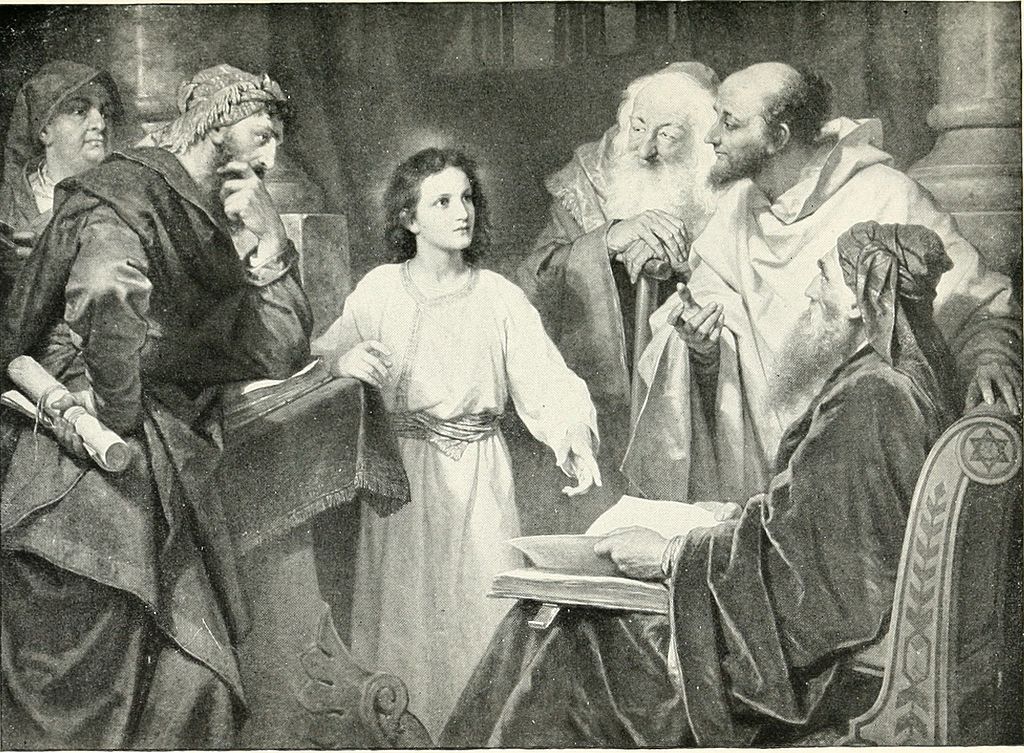| To work for the proper implementation of canon law is to play an extraordinarily constructive role in continuing the redemptive mission of Christ. Pope John Paul II |
|
21 dec 2024 |
Research links | Canonical & Roman Legal History, here.
Ius Antiquum, here.
Corpus Iuris Canonici, here.
Gratian, here. |
| Overview
|
Master Page on the Ius Decretalium (1234-1918)
The Quinque Libri Decretalium — Five Books of Decretals (a title ascribed by the ages) and also known as the "Liber Extra" (abbreviated "X") because it contained laws that were "outside" of Gratian's Concordia — was the Catholic Church's first authorized universal collection of canon law. Against the backdrop of Gratian's Concordia, and modified over time by later components of the Corpus Iuris Canonici, the QLD was the fundamental governing document of the Catholic Church until it was abrogated by the Pio-Benedictine Code of 1917.
|
| Background
The word "decretal" means "letter" but the term has take on many, many connotations depending on context. |
The basic structure of the QLD is presented at the Resource Page on Ius Decretalium, here.
For a general orientation to Decretal studies see, e.g., P. Torquebiau, “Corpus Iuris Canonici”, DDC IV: 610-644, esp. "Les Décretales de Grégoire IX", at coll. 627-632; A. Van Hove, "Decretales" CE IV: 670-763, on-line here, esp. pt. III, thereof; C. Duggan, "Decretals, Collections of", NCE IV: 709-711; and C. Duggan, "Decretals, Collections of", NCE2 IV: 601-604. On the partes decisae see, e.g., R. Naz, “Partes Decisae”, DDC VI 1248, or more generally P. Torquebiau, “Corpus Iuris Canonici, II. Les Dècrètals de Grégoire IX”, DDC IV: 627-632, at 632.
|
| Editio Typica official edition |
An original and/or critical edition of Gregory's Quinque Libri Decretalium or Liber Extra does not exist. The version most in use today is that of Aemilius Friedberg (1837-1910), ed., Corpus Iuris Canonici editio Lipsiensis secunda post Aemilii Ludouci Richteri, Pars Secunda, Decretalium Collectiones, Decretales D. Gregorii P. IX Compilatio (various publishers, most recently Lawbook Exchange, 2000) coll. 1-928, available on-line in five books as follows: Iudex, Iudicium, Clerus, Connubia, Crimen. The citation system used for the QLD (and the rest of the CJC) in its day is unusual by modern standards and in some ways is not intuitive. That citation system is explained here.
|
| Citations for the Ius Decretalium |
The citation system originally used for the QLD (and the rest of the CJC) is unusual by modern standards and in some ways is not intuitive. =
For a lighter (but eminently useful) look at the citation systems used, see here.
An original and/or critical edition of Gregory's Quinque Libri Decretalium or Liber Extra does not exist. The version most in use today is that of Aemilius Friedberg (1837-1910), ed., Corpus Iuris Canonici editio Lipsiensis secunda post Aemilii Ludouci Richteri, Pars Secunda, Decretalium Collectiones, Decretales D. Gregorii P. IX Compilatio (various publishers, most recently Lawbook Exchange, 2000) coll. 1-928, available on-line in five books as follows: Iudex, Iudicium, Clerus, Connubia, Crimen.
|
| Commentary |
Commentary on the QLD began almost immediately; in its day much of that commentary would have been considered a 'study' but we would likely consider it a 'source' of QLD canonistics. Commentators on the Liber Extra were generally known as “Decretalists” to distinguish them from “Decretists”, that is, commentators on Gratian’s so-called Decretum. At the head of any list of decretalist commentary stands the 'ordinary gloss' on the text, which commentary quickly came to be included in virtually all printings of the QLD itself.
This Glossa Ordinaria on the Decretals of Gregory was written by Bernard of Parma († 1266) in the 1260s and was revised by Johannes Andreas (c. 1270-1348). See generally S. Kuttner & B. Smalley, "The Glossa Ordinaria to the Gregorian Decretals", English Historical Review 60 (1945) 97-105; S. Kuttner, "Notes on the Glossa Ordinaria of Bernard of Parma", Bulletin of Medieval Canon Law 11 (1981) 86-93; and P. Ourliac, “Bernard de Parme ou de Botone”, DDC II: 781-782.
The Glossa Ordinaria to which I have access is found in: Decretales D. Gregorii Papae IX. suae integritate una cum glossis restitvtae; Ad exemplar Romanum diligenter recognitae. Venetiis, apud Iuntas MDCXV. 1388 pp. + 53 pp. (Margarita decretalium), + 3 pp. (Repertorium verborum).
|
| Decretalist commentary, 13th to 19th centuries
|
Besides the ordinary gloss of Bernard, an enormous* amount of other commentary grew up around Quinque Libri Decretalium over the nearly seven centuries it was in force.
* When I say "enormous", I mean enormous. Pennington (CUA) notes that "Major commentaries on the Decretales Gregorii IX were written by the following canonists in the thirteenth century: Aegidius de Fuscarariis, Balduinus Brandenburgensis, Bernardus de Montemirato Bernardus Parmensis (this was the Glossa Ordinaria), Boatinus of Mantua, Bonaguida Aretinus, Egidius de Fuscarariis, Franciscus de Albano, Goffredus de Trano (Tranensis), Guillelmus Naso, Henry of Merseyburg, Henry of Susa, Innocent IV, Pope, Johannes (Guidonis) de Ancona, Johannes Hispanus de Compostela, Johannes de Phintona, Petrus Sampson and Vincentius Hispanus. Later commentaries were written by Alexander de Nevo, Alexander Tartagnus, Andreas Barbatius, Angelo da Castro, Antonius de Butrio, Antonius de Rosellis, Arnold Westphal, Augustin Bero, Baldus de Ubaldis, Benedictus Capra, Cosma Contarini, Dominicus de Sancto Geminiano, Egidius de Bellamera, Felinus Sandeus, Franciscus de Accoltis, Franciscus Zabarella, Giacomo Zocchi, Giovanni Giacomo Can, Henricus Bohic, Henricus minor, Jacobus Cionis Illerdensis, Johannes Andreae, Johannes Franciscus Poggius, Johannes de Lignano, Marianus Socinus, Martinus Martini, Nicolaus de Tudeschis, Paulus de Aretio, Petrus de Ancharano, Petrus Joannis, Philipus Decius, Prosdocimo Conti and Stefano Buonaccorsi."
Some of the decretalists listed below, because they wrote after the Council of Trent (1545-1563), are known as canonists of the Ius Novissimum, but that designation does not change the fact they were commenting on the QLD or Gregorian decretal law. In any event, among decretalists most useful today for understanding Gregorian canonistics are, I suggest, the following works.
|
|
|
|
|
|
• Henricus de Segusio [Hostiensis] (Italian prelate, c. 1200-1271), Summa (Aurea), una cum summariis et adnotationibus Nicolai Superantii [c. 1250], (Neudruck der Ausgabe, Lyon 1537, facsimile reprint, Scientia Aalen, 1962). ▪ Review: G. Lesage, Studia Canonica 13 (1979) 488-489. Notes: On the place of Hostiensis in canonistics see, e.g., C. Lefebvre, "Hostiensis", DDC V: 1211-1227; C. Lefebvre, "Hostiensis (Henry of Segusio)", NCE2 VII 134-136. ≡ See also Clarence Gallagher, Canon Law and the Christian Community: The Role of Law in the Church according to the Summa Aurea of Cardinal Hostiensis, Analecta Gregoriana 208 (1978) 242 pp.
• André Del Vaulx [Vallensis] (Belgian priest, 1569-1636), Paratitla sive summaria et methodica explicatio Decretalium D. Gregorii Papae IX. Opus novum, Scholae ac Foro, & Decretis Concilii Tridenti accomodatum [1628], revised edition (Lovanii: Apud Viduam Bernardini Masii sub viridi Cruce, 1667), 608 double-column pages plus index. GoogleBooks, here. ▪ Notes: On the place of Del Vaulx in canonistics see, e.g., R. Naz, "Delvaux (André)", DDC IV: 1097.
• Arnoldus Corvinus à Beldern (Dutch scholar, 1582?-1650), Jus Canonicum per aphorismos strictim explicatum [1643], (Elzevirium, 1651) [6]-362-[18], GoogleBooks, here. ▪ Notes: =. GoogleBooks, here. wiki Johannes Arnolid Corvinus.
• Thomas Sanchez (Spanish Jesuit, 1550-1610), Disputationum de S[ancto] Matrimonii Sacramento, in 2 vols., (Venetiis: Apud Ioannem Guerilium, 1613). ▪ Notes: On the place of Sanchez in canonistics see, e.g., R. Naz, "Sanchez (Thomas)", DDC VII: 864-870. = Googlebooks, three volume, here.
|
|
|
|
| • Ludovico Engel (Austrian Benedictine, 1630-1674), Collegium Universi Juris Canonici antehac juxta triplex juris objectum partitum [1671-1674] ... (7° ed., Apud Joseph Bettinelli: Venetiss, 1733), 527 double-column pages. ▪ Notes: On the place of Engel in canonistics see, e.g., G. Lepointe, “Engel ou Engl (Hanns-Ludwig)”, DDC V: 342-343; B. Piskula, "Engel, Hans Ludwig" NCE2 V: 220; wiki Hans Ludwig Engel. See also Resources on Engel, Manuale Parochorum, here.
|
|
|
• Enricus Pirhing (German Jesuit, 1606-1679), Jus Canonicum nova methodo explicatum, (Joannis Caspari Bencard, 1674-1678) in 4 vols. ▪ Notes: On the place of Pihring in canonistics see, e.g., R. Naz, “Pirhing (Enric)”, DDC VI: 1504; B. Piskula, "Pirhing, Ehrenreich", NCE2 XI: 358; wiki Enricus Pirhing.
• anon., Synopsis Pirhingiana seu SS. Canonum Doctrina ex fusioribus quinque libris Henrici Pirhing [1693] ... (9° ed., Romae: Typis S. Congregationis de Propaganda Fide, 1849), 808 pp. GoogleBooks, here. ▪ Notes: On the place of Pihring in canonistics see, e.g., R. Naz, “Pirhing (Enric)”, DDC VI: 1504 and B. Piskula, "Pirhing, Ehrenreich", NCE2 XI: 358.
|
|
|
• Johann Georg (Anacletus) Reiffenstuel (German Capuchin, 1641-1703), Jus Canonicum Universum [1700], (Parisiis: Apud Ludovicum Vives, 1864-1869), in 6 volumes. ▪ Notes: On the place of Reiffenstuel in canonistics see, e.g., R. Naz, "Reiffenstuel (Anaclet)", DDC VII: 547-548; D. Bonner, "Reiffenstuel, Anacletus (Johann Georg)" NCE2 XII: 34.
"Reiffenstuel enjoys unparalleled respect and is frequently cited as an approved author both in later canonical commentaries and in the opinions of the Church's courts. It is always with regret than an opinion of his is discarded." E. Roelker, Invalidating Laws (1955) at 119.
• Sinibaldo Fieschi, (Italian prelate, c. 1195 -1254) postea Innocent IV (reg. 1243-1254), Apparatus in quinque libros decretalium, transcribed as Commentaria Innocenti Quarti Pont. Maximi super Libros Quinque Decretalium cum Indice peculiari nunc recens collecto, (Frankfort, 1570), (Unveränderter Nachdruk, 1968, in 574 leaves). ▪ Notes: On the place of Sinibaldo in canonistics see, e.g., C. Lefebvre, "Sinibalde dei Fieschi (Innocent IV)", DDC VII: 1029-1062, esp. 1054 et ff.
|
|
|
|
|
|
• Francis Xavier Schmalzgrueber (German Jesuit, 1663-1735), Jus Ecclesiasticum Universum brevi methodo ad discentium utilitatem explicatum in quinque libros decretalium Gregorii ix. pontificis maximi [1719], (Romae: Ex Tipographia Rev. Cam. Apostolicae, 1843-1845), in 13 volumes. ▪ Notes: On the place of Schmalzgrueber in canonistics see, e.g., R. Naz, "Schmalzgrueber (François)", DDC VII: 888; D. Bonner, “Schmalzgrueber, Franz”, NCE2, XII: 741.
• Adam Huth (German Jesuit, 1696-1771), Jus Canonicum ad Libros V Decretalium Gregorii IX explicatum et per quaestiones ac responsa in methodum brevem et claram redactum [1731], (Augustae Vindelicorum: Sumptibus Mathiae Wolff Bibliopolae, 2° ed., 1732), in 5 volumes bound as one. Googlebooks, here ▪ Notes: On the place of Huth in canonistics see, e.g., É. Jombart, "Huth (Adam)", DDC V: 1232; and German wiki Adam Huth.
• Sinibaldo Fieschi, (Italian prelate, c. 1195 -1254) postea Innocent IV (reg. 124301254), Apparatus in quinque libros decretalium, transcribed as Commentaria Innocenti Quarti Pont. Maximi super Libros Quinque Decretalium cum Indice peculiari nunc recens collecto, (Frankfort, 1570), (Unveränderter Nachdruk, 1968, in 574 leaves). ▪ Notes: On the place of in canonistics
|
|
See David Hogan, “Pope Benedict XIV and canon law”, Canon Law Society of Great Britain & Ireland Newsletter 142 (June 2005) 13-20. |
In a category to himself is Benedict XIV (reg. 1740-1758), that is, Prospero Lambertini (1675-1758). ▪ Notes: On the enduring place of Lambertini in canonistics see, e.g., R. Naz., "Benoit XIV", DDC II: 752-761.
• Benedicti XIV Pont. Opt. Max. Opera Omnia in Tomos XVII Distributa, (Prati: Typograhia Aldina, 1839-1845) in 14 vols., consisting of Opus ...
• de Servorum Dei Beatificatione, et Beatorum Canonizatione (1734-1738), vols. 1-7; • de Sacrosancto Missae Sacrificio (=), vol. 8; • de Festis Domini Nostri Jesu Christi et Beatae Mariae Virginis (=), vol. 9; • Institutiones Ecclesiasticas (1731), vol. 10; • de Synodo Dioecesana (1748), vol. 11; • Quaestiones Canonicas et Morales (1741), vols. 12-13 • Opuscula Miscellanea (=), vol. 14.
The esteem that Lambertini enjoyed among Catholic and non-Catholic intelligentsia throughout his life is undisputed but it prompts a question: given the importance of Benedict XIV’s reign and the enormous amount of material available on his life, why are biographies of Lambertini/Benedict XIV so few? See, e.g., Renée Haynes, Philosopher King: The Humanist Pope Benedict XIV (Weidenfeld & Nicholson, 1970) at 1, asking the same question some fifty years after Pastor (her own work being too narrowly focused on Benedict’s analysis of the paranormal to serve as an adequate biography of the man as a whole.) Robert Wood, The Beautiful Light (Lifevest Publishing, 2005) is a step toward a broader biography, but does not provide critical or academic analysis. The earliest life of Lambertini/Benedict XIV is L. A. Caraccioli, La Vie du Pape Benôit XIV Prosper Lambertini, avec des notes instructives et son portrait (Paris, 1783) and the scholar-pope figures in several nationalistic (mostly Italian) biographical dictionaries. See generally Haynes Benedict XIV at 233-236.
The text of Benedict XIV, const. Sacramentum poenitentiae (1 June 1741), is available in a number of places, including Magnum Bullarium Romanum…Benedicti Papae XIV Bullarium, (Graz: Akademische Druck- u. Verlagsanstalt, 1966) in 2 vols., I: 50-54 and Benedicti XIV Opera Omnia in Tomos XVII Distributa (Prati: Aldina, 1839-1846) [herein Benedicti Opera] XV: 65-68, but the most accessible authentic version of Sacramentum is that found in the appendix to the Pio-Benedictine Code. For an English translation of Sacramentum, see Edward Peters, "Retrospectives on Benedict XIV's const. Sacramentum poenitentiae (1741)", Apollinaris 84 (2011) 581-605, esp. pp. 599-605. Lorenzo Miguélez Domínguez prepared a Spanish translation of the salient parts of Sacramentum for L. Miguélez Domínguez, et al., Código de Derecho Canónico y Legislación Complementaria: Texto bilingüe y comentado por professors de la Pontificia Universidad de Salamanca, (Biblioteca de Autores Cristianos, 3° ed., 1949) 883-884, reprinted in aa. vv., Comentarios al Código de Derecho Canónico con el texto legal latino y castellano, (Biblioteca de Autores Cristianos, 1963-1964) in 4 vols., IV: 607-609. Figuring from Sacramentum’s promulgation date of 1 June 1741 to its final abrogation on 30 April 2001 by John Paul II's Sacramentorum sanctitatis, one can recognize an effective canonical lifespan for Sacramentum of just one month shy of 260 years.
|
| Encyclopedias
|
The first great Catholic encyclopedia, the Prompta Biblioteca, provides a context for understanding the Ius Decretalium.
• Lucius Ferraris († c. 1763), Prompta Biblioteca canonica, juridica, moralis, theologica [1746], (Typis Abbatiae Montis Casini, rev. ed., 1844-1847) in 7 vols. ▪ Notes: On the place of Ferraris in canonistics see, e,g,. G. Lepointe, "Ferraris (Lucius)", DDC V: 831. See also Resource Page on Ferraris, Prompta Bibliotheca, here.
Similarly, although on a much smaller scale than Ferraris' Prompta, Taunton's Law of the Church attempted to summarize canonical points in a reference work format.
• Ethelred Taunton (English priest, 1857-1907), The Law of the Church: A Cyclopaedia of Canon Law for English-Speaking Countries (Herder, 1906) 652 pp. ▪ Notes: On the place of Taunton in canonistics see, e.g., D. Milburn, "Taunton, Etheldred Luke", NCE2 XIII: 945-946. ≡ Taunton's Cyclopaedia is available on-line, here. |
| Decretal commentary, 19th century |
With the benefit of hindsight, one can detect, I think, a certain "tiredness" in decretal commentary by the mid-19th century, as if the constraints of the Quinque Libri Decretalium were at last being felt, and the need to rethink the fundamental organization of canon law were becoming clearer by the decade. With the exception of the great Wernz, of course, and perhaps of Santi, 19th century pan-decretal commentary was, it seems, less and less connected to either the legal tradition that had fed earlier authors or to the pastoral problems that had driven them.
One attempt to compile a semi-authoritative collection of later Decretal law was made, namely, F. Sentis, ed., Clementis Papae VIII Decretales quae vulgo nuncupantur Liber Septimus Decretalium Clementis VIII (Friburgi Brisgoviale: Herder 1870) 194 pp. ▪ Notes: On the place of Sentis in canonistics see, e.g., R. Naz, "Sentis (François-Jacques)", DDC VII: 962.
• D. Craisson (French priest, † 1881), Elementa Juris Canonici ad usum Galliae Seminariorum [1862], (Jouby et Roger, 3° ed.,1873). ▪ Notes: On the place of Craisson in canonistics see, e.g., J. Raffalli, DDC IV: 757.
• Ludovico Huguenin (French priest, 1826-1871), Expositio Methodica Juris Canonici, (Gaume Fratres et J. Duprey, 1867) in 2 vols.
• Philippus de Angelis (Italian prelate, 1792-1877), Praelectiones Iuris Canonici ad methodum decretalium gregorii ix exactae, (Romae: Ex Typoghraphia della Pace, 1877-1891) in 5 vols.
• Franciscus Santi (Italian priest, 1830-1885), Praelectiones Juris Canonici quas juxta ordinem Decretalium Gregoriii IX [1885], (Regensburg: Pustet, 4° ed., 1905) in 3 vols. ▪ Notes: On the place of Santi in canonistics see, e.g., R. Charbanne, "Santi, François", DDC VII: 875.
• Sebastian Bach Smith (American priest, 1845-1895), Compendium Juris Canonici ad usum cleri et seminariorum hujus regionis accomodatum [1890] (4° ed., Benziger, 1891) 435 pp.
• Anselme Tilloy (French priest, 1824-1903?), Traité Théorique et Pratique de Droit Canonique, (Savète, 1895) in 2 vols.
• Andreas Meehan, Compendium Juris Canonici quod in Usum Suorum AUditorum Scripsit (Roffae: Joannis P. Smith, 1899) 429 pp.
• Ludovicus Rivet, (French Jesuit, 1871-1915), Institutiones Iuris Ecclesiastici Privati, (Rome: Gregorianum, 1914) in 2 vols.
|
| User notes |
There might be editions of works that pre-date or post-date those cited herein. Reviews and Notes are grey-highlighted, on-line biographical information is underlined blue-linked, and matters in green highlights are of special interest. Yellow highlights are cautions for users, while the markers "=", "≠", and "≈" are placeholders for use by webmaster. |
| Abbreviations on this page might include: |
AAS CCC CLD CLSA Comm. | Acta Apostolicae Sedis (1909 et seq.) Catechism of the Catholic Church (1997) Canon Law Digest (beginning 1933) Canon Law Society of America Commentary (≠ Communicationes) | DDC DMC NCE NCE2 QLD | Dictionnaire de Droit Canonique (1935-1965) Dictionarium Morale et Canonicum (1962-1968) New Catholic Encyclopedia (1967) New Catholic Encyclopedia, 2° ed. (2003) Quinque Libri Decretalium (1234) |
| Materials on this website represent the opinions of Dr. Edward Peters and are offered in accord with Canon 212 § 3. This website undergoes continual refinement and development. No warranty of completeness or correctness is made. Dr. Peters' views are not necessarily shared by others in the field nor are they intended as canonical or civil advice.
CanonLaw.info Homepage & Site Directory / Help support CanonLaw.info / Original Materials © Edward N. Peters |
| Staging |
Inncoent
DECRETALES D[omini] pape Gregorij noni acurata diligentia nouissime, (Impressas Uenetijs: Sūma cū diligētia i[n] edib[us] Luce Antonij de Giōta florentini, 1514).
unprocessed
· = Aichner, Compendium Juris Ecclesiastici, (1895). · = Audisio, Droit Publique de l'Eglise, 3 vols., (1865). · F. Cavignis, Institutiones Juris Publici Ecclesiastici, (1882). · J. Devoti, Jus Canonicum Universum, (1837). Apparently only 1 volume appeared. · J. Devoti, Juris Canonici Universi Publici et Privati Libri Quinque, 3 vols., (1803). · E. Grandclaude, Ius Canonicum (1882). · F. Heiner, Katholisches Kirchenrecht, 2 vols., (1893-1894). · C. Herbermann, ed., The Catholic Encyclopedia, 16 vols. Appeared in the years just before promulgation of the 1917 Code, its numerous canonical entries are a good snapshot of canonistics at the end of the decretal era. Available at New Advent. · F. Laurin, Introductio in Corpus Iuris Canonici (1889). · Libertore, =, Droit Publique de l'Eglise, (1892). · F. Maasen, Geschichte der Quellen u. der Literatur des Canonischen Rechts (1870). Only one volume seems to have appeared. · G. Phillips, Kirchenrecht, 8 vols., (1845). · O. Reichel, A Complete Manual of Canon Law, 2? vols., (1896). · J. Schulte, Lehrbuch de Katholisches Kirchenrechts, (1863). · J. Schulte, Geschichte der Quellen u. der Literatur des Canonischen Rechts von Gratian bis auf die Gegenwart, 3 vols., (1875). · S. Smith, Elements of Ecclesiastical Law, 3 vols., numerous editions. Excellent work. · S. Vechiotti, Institutiones Canonicae, 3 vols., often bound as one, doubled-columns (1875). · = Von Scherer, Handbuch d. Kirchenrechts, 2 vols. (1886). · J. Zallinger, Institutiones Iuris Ecclesastici, 5 vols., (1832). · Z. Zitelli, Apparatus seu Compendium Iuris Ecclesiastici, Par I De Personis, Pars II De Rebus, (1907).'
Topical Studies
Papacy · D. Bouix, De Papa ubi et de Concilio Oecumenico, 3 vols. (1870). Bouix wrote some 15 volumes on a wide variety of canonical topics. · D. Palmieri, Tractatus de Romano Pontifice (3d ed., 1902) 783 pp. Censorship of Books · I. Pennacchi, In Constitutionem Apostolicam "Officiorum ac munerum" (1898) 265 pp. Religious · C. Bachofen, Compendium Juris Regularium (1903) 441 pp. · D. Bouix, Tractatus de Iure Regularium, 2 vols., (2d ed., 1867). Widely cited. · A. Vermeersch, De Religiosis et Missionariis (alternate titles), 2 or 5 vols., depending, (1911). Marriage · I. de Becker, De Sponsalibus et Matrimonio Praelectiones Canonicae (1896), 548 pp. · C. Cronin, The New Matrimonial Legislation (2d ed., 1909), 320 pp. Prompted by the promulgation of S.C. Council, Ne temere (1907). · M. Heiss, De Matrimonio...usui venerabilis cleri Americani (1861), 424 pp. · S. Smith, The Marriage Process in the United States (1893), 435 pp. Prompted by the promulgation of S.C. de Prop. Fide, Causae matrimoniales (1884). Sacraments · S. Many, Praelectiones de Sacra Ordinatione, (1905), 667 pp. Sanctions · M. Lega, De Delictis et Poenis, usually appears as 2 vols. Procedures · P. Baart, Legal Formulary (2d ed., 1898) 492 pp. · F. Droste, Canonical Procedure in Disciplinary and Criminal Cases of Clerics, (1897), 268 pp. Commentary on Instruction of 1880. · M. Lega, Coram Lega habitae S. R. Rotae Decisiones sive Sententiae ...1909-1914, (1926), 604 pp. A collection of sentences on a variety of issues, as penned by one of the Rota's finest minds. · S. Smith, The New Procedures in Criminal and Disciplinary Causes of Ecclesiastics in the United States (1887). Prompted by the promulgation of S. C. de Prop. Fide, instruction Cum magnopere (1884).
|
| • Séraphin Many (French Sulpician, 1847-1922), Praelectiones de Sacra Ordinatione (Letouzey et Ané, 1905) 667 pp. ▪ Notes: On the place of Many in canonistics see, e.g., R. Naz, "Many (Séraphin)", DDC VI: 725-726.
• Nicholas Hilling (German priest, 1871-≈), Procedure at the Roman Curia [1908], (Wagner, 2° ed., 1909) 375 pp.
• Joseph Laurentius (German Jesuit, 1861-1927), Institutiones Iuris Ecclesiastici quas in usum scholarum [1902], 2nd ed., (Herder, 1908) 712 pp.
• Michael Lega (Italian prelate, 1860-1935), Praelectiones in Textum Iuris Canonici, De Delictis et Poenis [1910], (2° ed., = Ex Typographia Pontificii in Instituto Pii X, 1910) in 2 vols. ▪ Notes: On the place of Lega in canonistics see, e.g., R. Naz, "Lega (Michel)", DDC VI : 371.
• Michael Martin (American Jesuit, 1846-1915), The Roman Curia as it now exists (Benziger, 1913) 423 pp.
• Sebastian Bach Smith (American priest, 1845-1895), The Marriage Process in the United States (Benziger, 1893) 435 pp.
|
| QLD 1.1.2, sacro concilio approbante QLD 1.2.1, laws are meant to be observed
Andreas, Cleveland Museum # 1982.139 info here. 2? |

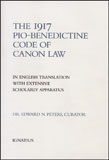
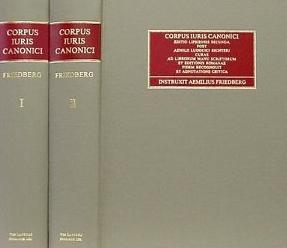
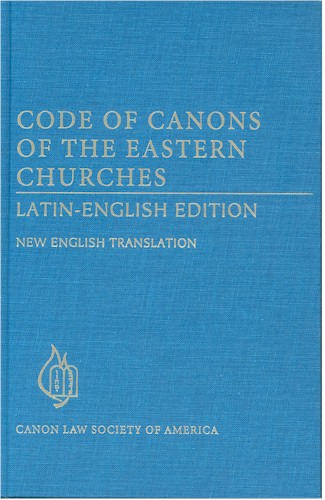
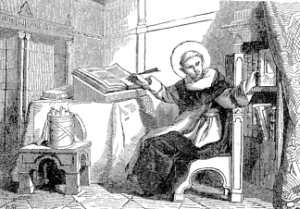 From 5 September 1234 through 18 May 1918 (some 684 years) universal canon law was organized under an official collection of five books (Judge, Trial, Cleric, Marriage, and Crime) consisting of mostly papal decretal letters, which collection had been commissioned by Pope Gregory IX in 1231 and was assembled over four years by St. Raymond Peñafort, op, (1175-1275). Although the Liber Extra was a collection, and not a code, it was (unlike Gratian's Concordia) an "official" collection in that the papal letters collected therein had been edited and re-promulgated in their revised forms (that is, without their 'partes decisae') and given force of law.
From 5 September 1234 through 18 May 1918 (some 684 years) universal canon law was organized under an official collection of five books (Judge, Trial, Cleric, Marriage, and Crime) consisting of mostly papal decretal letters, which collection had been commissioned by Pope Gregory IX in 1231 and was assembled over four years by St. Raymond Peñafort, op, (1175-1275). Although the Liber Extra was a collection, and not a code, it was (unlike Gratian's Concordia) an "official" collection in that the papal letters collected therein had been edited and re-promulgated in their revised forms (that is, without their 'partes decisae') and given force of law.
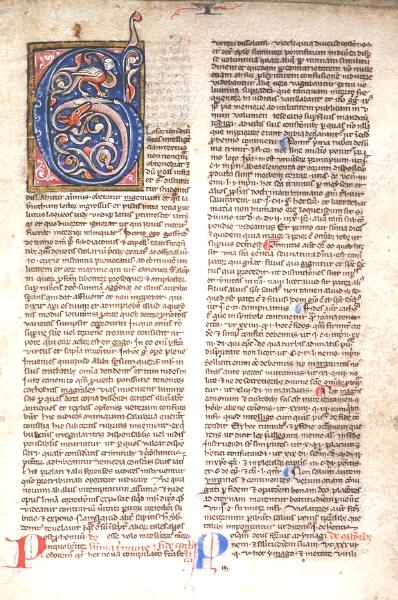 • Gottofredo da Trano (Italian prelate, † 1245),
• Gottofredo da Trano (Italian prelate, † 1245), 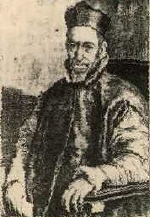 • Prospero Fagnanus (Italian cleric, 1588-1678),
• Prospero Fagnanus (Italian cleric, 1588-1678), 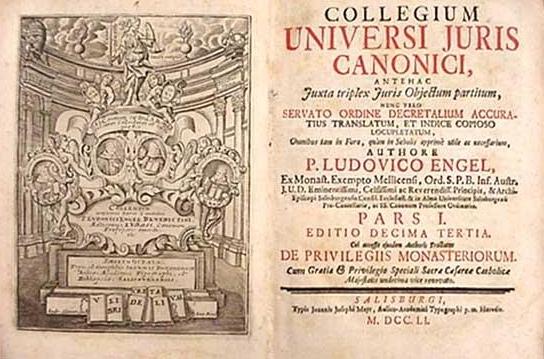 • Ludovico Engel (Austrian Benedictine, 1630-1674),
• Ludovico Engel (Austrian Benedictine, 1630-1674), 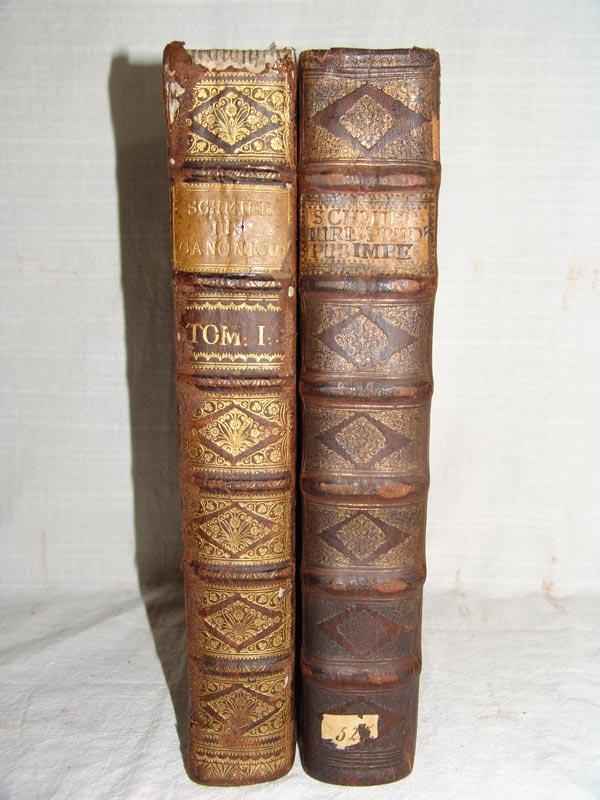 • Francisco Schmier (German Benedictine, 1680-1728),
• Francisco Schmier (German Benedictine, 1680-1728), 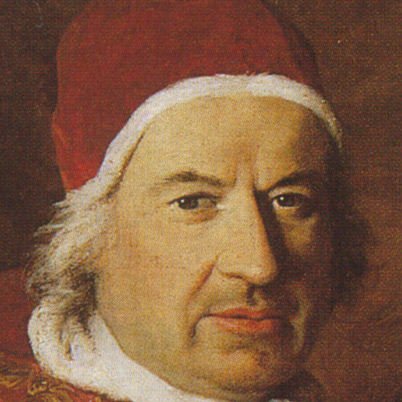
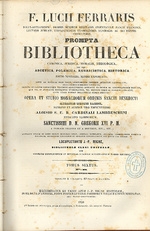

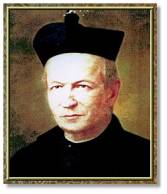 •
• 